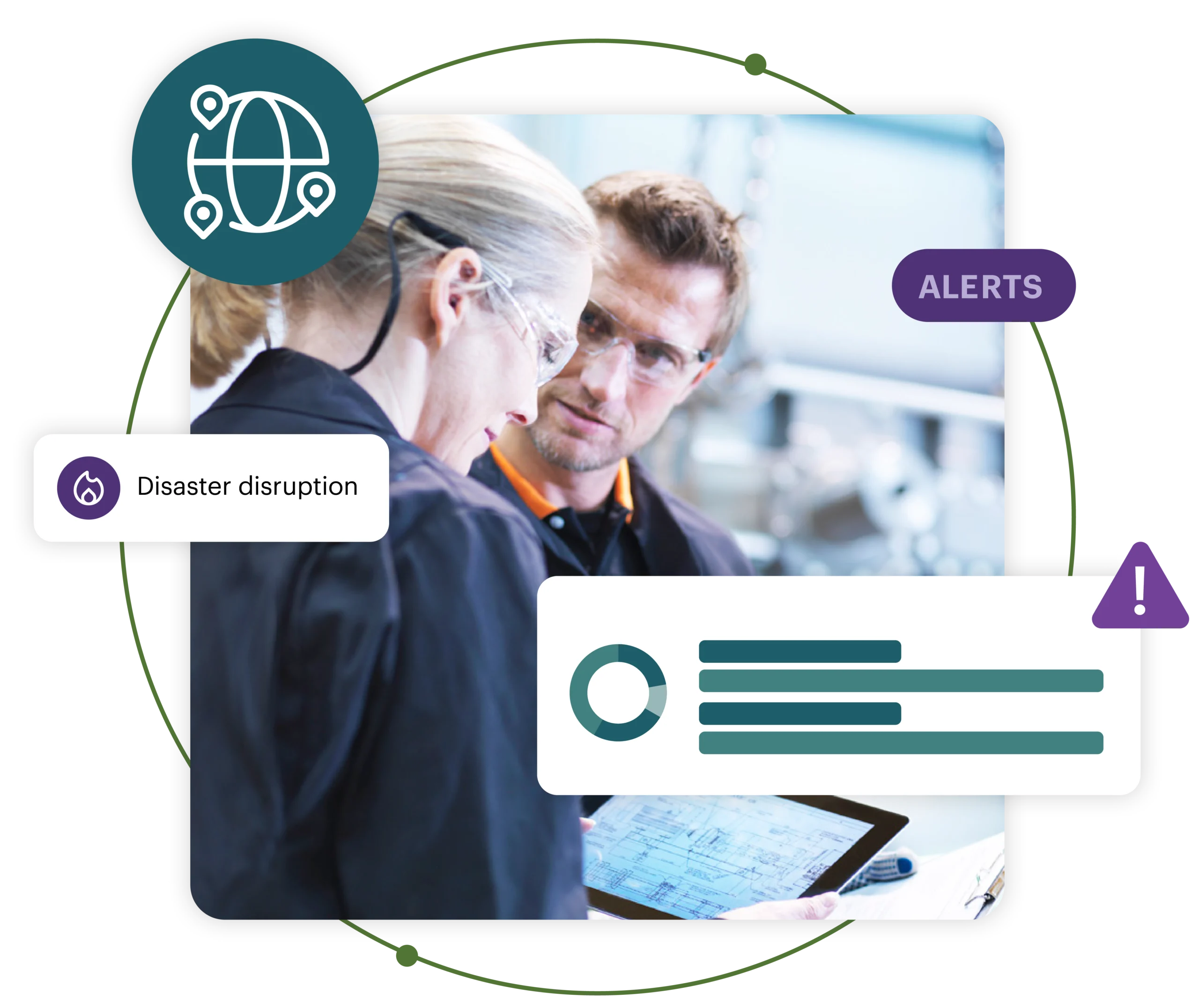Get more supply clarity, less risk data chaos
Remember when you’d learn about supply chain disruptions through frantic phone calls, or online news articles? When a supplier’s factory fire meant hours of spreadsheet hunting and days of uncertainty?
While those days of manual, reactive risk management are behind us, today’s AI-driven intelligence poses new challenges of its own: an overwhelming flood of risk event data that can leave you drowning in alerts, unsure of which to focus on first.
Your competitive advantage lies in how quickly and effectively you can assess the impact and respond to disruptions. Download our eBook to discover how to move from reactive to proactive, cut through the noise, and focus on what matters the most.
What you’ll uncover in this supply chain risk management eBook
Solutions to manage the overload of risk event data and prioritize events that need immediate attention
How AI-driven, connected systems are improving how you react to risk events with real-time alerts and automated impact assessments
Methods to automatically connect external risk events to impacted suppliers and materials through intelligent supply chain mapping
Strategies to improve effective response collaboration with suppliers during disruptions
How an integrated business risk dashboard helps evaluate the severity of a disruption on customer commitments




